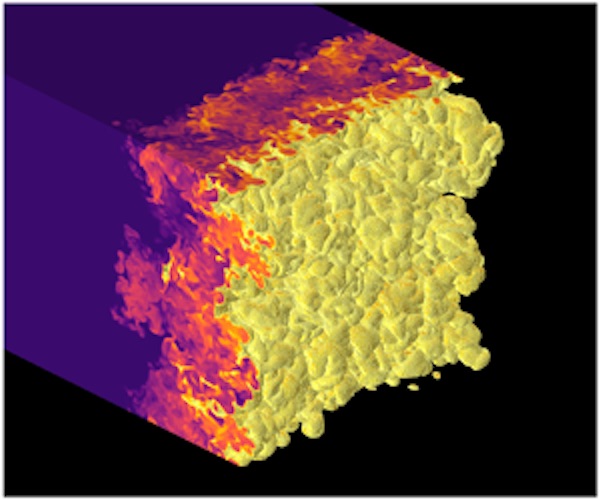Simulation and flow physics of a shocked and reshocked high-energy-density mixing layer

The simulations visualized here are based on a series of experiments performed at the National Ignition Facility (NIF) and designed as an HED analogue of non-HED shock-tube studies of the Richtmyer–Meshkov instability and turbulent mixing. The simulations treat many complications absent from canonical non-HED shock-tube flows, including distinct ion and free-electron internal energies, non-ideal equations of state, radiation transport and plasma-state mass diffusivities, viscosities and thermal conductivities. Dimensional analysis reveals that Reynolds numbers and diffusive Péclet numbers in the HED flow are similar to those in a canonical non-HED analogue, but conductive Péclet numbers are much smaller in the HED flow due to efficient thermal conduction by free electrons. It is shown that the mechanism of electron thermal conduction significantly softens local spanwise gradients of both temperature and density, which causes a minor but non-negligible decrease in enstrophy production and small-scale mixing relative to a flow without this mechanism.
| Image | Image(s) courtesy of Jason D. Bender, Oleg Schilling, Kumar S. Raman, Robert A. Managan, Britton J. Olson, Sean R. Copeland, C. Leland Ellison, David J. Erskine, Channing M. Huntington, Brandon E. Morgan, Sabrina R. Nagel, Shon T. Prisbrey, Brian S. Pudliner, Philip A. Sterne, Christopher E. Wehrenberg, Ye Zhou |
Previous Post in EXAMPLES Back to EXAMPLES Next Post in EXAMPLES